RBS 2011 Annual Report Download - page 210
Download and view the complete annual report
Please find page 210 of the 2011 RBS annual report below. You can navigate through the pages in the report by either clicking on the pages listed below, or by using the keyword search tool below to find specific information within the annual report.-
 1
1 -
 2
2 -
 3
3 -
 4
4 -
 5
5 -
 6
6 -
 7
7 -
 8
8 -
 9
9 -
 10
10 -
 11
11 -
 12
12 -
 13
13 -
 14
14 -
 15
15 -
 16
16 -
 17
17 -
 18
18 -
 19
19 -
 20
20 -
 21
21 -
 22
22 -
 23
23 -
 24
24 -
 25
25 -
 26
26 -
 27
27 -
 28
28 -
 29
29 -
 30
30 -
 31
31 -
 32
32 -
 33
33 -
 34
34 -
 35
35 -
 36
36 -
 37
37 -
 38
38 -
 39
39 -
 40
40 -
 41
41 -
 42
42 -
 43
43 -
 44
44 -
 45
45 -
 46
46 -
 47
47 -
 48
48 -
 49
49 -
 50
50 -
 51
51 -
 52
52 -
 53
53 -
 54
54 -
 55
55 -
 56
56 -
 57
57 -
 58
58 -
 59
59 -
 60
60 -
 61
61 -
 62
62 -
 63
63 -
 64
64 -
 65
65 -
 66
66 -
 67
67 -
 68
68 -
 69
69 -
 70
70 -
 71
71 -
 72
72 -
 73
73 -
 74
74 -
 75
75 -
 76
76 -
 77
77 -
 78
78 -
 79
79 -
 80
80 -
 81
81 -
 82
82 -
 83
83 -
 84
84 -
 85
85 -
 86
86 -
 87
87 -
 88
88 -
 89
89 -
 90
90 -
 91
91 -
 92
92 -
 93
93 -
 94
94 -
 95
95 -
 96
96 -
 97
97 -
 98
98 -
 99
99 -
 100
100 -
 101
101 -
 102
102 -
 103
103 -
 104
104 -
 105
105 -
 106
106 -
 107
107 -
 108
108 -
 109
109 -
 110
110 -
 111
111 -
 112
112 -
 113
113 -
 114
114 -
 115
115 -
 116
116 -
 117
117 -
 118
118 -
 119
119 -
 120
120 -
 121
121 -
 122
122 -
 123
123 -
 124
124 -
 125
125 -
 126
126 -
 127
127 -
 128
128 -
 129
129 -
 130
130 -
 131
131 -
 132
132 -
 133
133 -
 134
134 -
 135
135 -
 136
136 -
 137
137 -
 138
138 -
 139
139 -
 140
140 -
 141
141 -
 142
142 -
 143
143 -
 144
144 -
 145
145 -
 146
146 -
 147
147 -
 148
148 -
 149
149 -
 150
150 -
 151
151 -
 152
152 -
 153
153 -
 154
154 -
 155
155 -
 156
156 -
 157
157 -
 158
158 -
 159
159 -
 160
160 -
 161
161 -
 162
162 -
 163
163 -
 164
164 -
 165
165 -
 166
166 -
 167
167 -
 168
168 -
 169
169 -
 170
170 -
 171
171 -
 172
172 -
 173
173 -
 174
174 -
 175
175 -
 176
176 -
 177
177 -
 178
178 -
 179
179 -
 180
180 -
 181
181 -
 182
182 -
 183
183 -
 184
184 -
 185
185 -
 186
186 -
 187
187 -
 188
188 -
 189
189 -
 190
190 -
 191
191 -
 192
192 -
 193
193 -
 194
194 -
 195
195 -
 196
196 -
 197
197 -
 198
198 -
 199
199 -
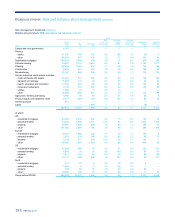 200
200 -
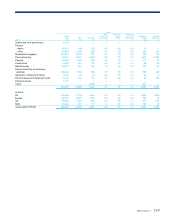 201
201 -
 202
202 -
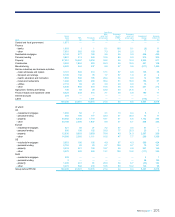 203
203 -
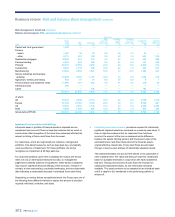 204
204 -
 205
205 -
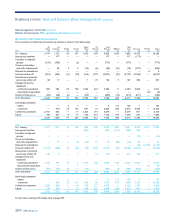 206
206 -
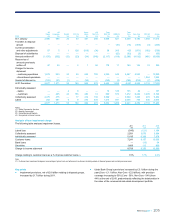 207
207 -
 208
208 -
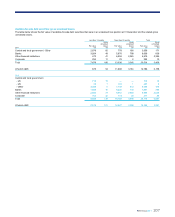 209
209 -
 210
210 -
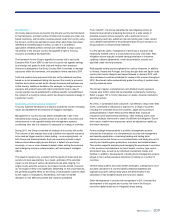 211
211 -
 212
212 -
 213
213 -
 214
214 -
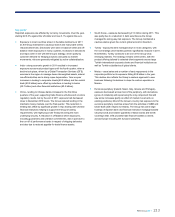 215
215 -
 216
216 -
 217
217 -
 218
218 -
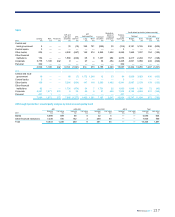 219
219 -
 220
220 -
 221
221 -
 222
222 -
 223
223 -
 224
224 -
 225
225 -
 226
226 -
 227
227 -
 228
228 -
 229
229 -
 230
230 -
 231
231 -
 232
232 -
 233
233 -
 234
234 -
 235
235 -
 236
236 -
 237
237 -
 238
238 -
 239
239 -
 240
240 -
 241
241 -
 242
242 -
 243
243 -
 244
244 -
 245
245 -
 246
246 -
 247
247 -
 248
248 -
 249
249 -
 250
250 -
 251
251 -
 252
252 -
 253
253 -
 254
254 -
 255
255 -
 256
256 -
 257
257 -
 258
258 -
 259
259 -
 260
260 -
 261
261 -
 262
262 -
 263
263 -
 264
264 -
 265
265 -
 266
266 -
 267
267 -
 268
268 -
 269
269 -
 270
270 -
 271
271 -
 272
272 -
 273
273 -
 274
274 -
 275
275 -
 276
276 -
 277
277 -
 278
278 -
 279
279 -
 280
280 -
 281
281 -
 282
282 -
 283
283 -
 284
284 -
 285
285 -
 286
286 -
 287
287 -
 288
288 -
 289
289 -
 290
290 -
 291
291 -
 292
292 -
 293
293 -
 294
294 -
 295
295 -
 296
296 -
 297
297 -
 298
298 -
 299
299 -
 300
300 -
 301
301 -
 302
302 -
 303
303 -
 304
304 -
 305
305 -
 306
306 -
 307
307 -
 308
308 -
 309
309 -
 310
310 -
 311
311 -
 312
312 -
 313
313 -
 314
314 -
 315
315 -
 316
316 -
 317
317 -
 318
318 -
 319
319 -
 320
320 -
 321
321 -
 322
322 -
 323
323 -
 324
324 -
 325
325 -
 326
326 -
 327
327 -
 328
328 -
 329
329 -
 330
330 -
 331
331 -
 332
332 -
 333
333 -
 334
334 -
 335
335 -
 336
336 -
 337
337 -
 338
338 -
 339
339 -
 340
340 -
 341
341 -
 342
342 -
 343
343 -
 344
344 -
 345
345 -
 346
346 -
 347
347 -
 348
348 -
 349
349 -
 350
350 -
 351
351 -
 352
352 -
 353
353 -
 354
354 -
 355
355 -
 356
356 -
 357
357 -
 358
358 -
 359
359 -
 360
360 -
 361
361 -
 362
362 -
 363
363 -
 364
364 -
 365
365 -
 366
366 -
 367
367 -
 368
368 -
 369
369 -
 370
370 -
 371
371 -
 372
372 -
 373
373 -
 374
374 -
 375
375 -
 376
376 -
 377
377 -
 378
378 -
 379
379 -
 380
380 -
 381
381 -
 382
382 -
 383
383 -
 384
384 -
 385
385 -
 386
386 -
 387
387 -
 388
388 -
 389
389 -
 390
390 -
 391
391 -
 392
392 -
 393
393 -
 394
394 -
 395
395 -
 396
396 -
 397
397 -
 398
398 -
 399
399 -
 400
400 -
 401
401 -
 402
402 -
 403
403 -
 404
404 -
 405
405 -
 406
406 -
 407
407 -
 408
408 -
 409
409 -
 410
410 -
 411
411 -
 412
412 -
 413
413 -
 414
414 -
 415
415 -
 416
416 -
 417
417 -
 418
418 -
 419
419 -
 420
420 -
 421
421 -
 422
422 -
 423
423 -
 424
424 -
 425
425 -
 426
426 -
 427
427 -
 428
428 -
 429
429 -
 430
430 -
 431
431 -
 432
432 -
 433
433 -
 434
434 -
 435
435 -
 436
436 -
 437
437 -
 438
438 -
 439
439 -
 440
440 -
 441
441 -
 442
442 -
 443
443 -
 444
444 -
 445
445 -
 446
446 -
 447
447 -
 448
448 -
 449
449 -
 450
450 -
 451
451 -
 452
452 -
 453
453 -
 454
454 -
 455
455 -
 456
456 -
 457
457 -
 458
458 -
 459
459 -
 460
460 -
 461
461 -
 462
462 -
 463
463 -
 464
464 -
 465
465 -
 466
466 -
 467
467 -
 468
468 -
 469
469 -
 470
470 -
 471
471 -
 472
472 -
 473
473 -
 474
474 -
 475
475 -
 476
476 -
 477
477 -
 478
478 -
 479
479 -
 480
480 -
 481
481 -
 482
482 -
 483
483 -
 484
484 -
 485
485 -
 486
486 -
 487
487 -
 488
488 -
 489
489 -
 490
490
 |
 |

208 RBS Group 2011
Risk management: Country risk
Introduction*
Country risk is the risk of material losses arising from significant country-
specific events such as sovereign events (default or restructuring);
economic events (contagion of sovereign default to other parts of the
economy, cyclical economic shock); political events (transfer or
convertibility restrictions and expropriation or nationalisation); and natural
disaster or conflict. Such events have the potential to affect elements of
the Group’s credit portfolio that are directly or indirectly linked to the
country in question and can also give rise to market, liquidity, operational
and franchise risk related losses.
External risk environment*
2011 was another year of heightened country risks. However, trends
were divergent, with conditions deteriorating among vulnerable eurozone
countries facing growth impediments and higher public debt burdens,
while many emerging markets continued to enjoy relative stability, seeing
net inflows of capital for the full year and lower spreads despite some risk
aversion in the second half. In the US, notwithstanding a more
challenging political environment and a sovereign downgrade from a
rating agency, a deal was secured to increase the sovereign debt ceiling,
and yields on government debt remain low.
Eurozone risks
Europe was at the centre of rising global risks, owing to a combination of
slower growth among some of its major economies and a further
deepening of the ongoing sovereign crisis, which in turn harmed financial
sector health. Risks in Greece rose as a deeper than expected
contraction in GDP impacted the fiscal adjustment programme and hit
debt sustainability. Negotiations on a voluntary restructuring of public
debt held by the private sector commenced in the first half and a deal
was eventually reached in February 2012, with more punitive write-offs
for private investors than previously envisaged. This in turn led to an
agreement by eurozone leaders on a further borrowing programme for
the Greek government.
In May 2011, Portugal’s new government agreed a borrowing programme
with the European Union and International Monetary Fund (EU-IMF) after
a sharp deterioration in sovereign liquidity. Ireland's performance under
its EU-IMF programme was good and the announcement of a bank
restructuring deal without defaults on senior debt obligations helped
improve market confidence. This was reflected in a compression in bond
spreads in the second half of the year.
Despite the announcement of significant new support proposals by
eurozone leaders in July 2011, investor worries over risks to their
implementation rose and market conditions worsened markedly as a
result. Risk aversion towards Spanish and Italian assets picked up and
despite a policy response by both countries, yields remained elevated,
prompting the ECB to intervene to support their bonds in secondary
markets for the first time. Contagion affected bank stocks and asset
prices.
*unaudited
Eurozone leaders responded by stepping up anti-crisis efforts, focusing
largely on agreeing fiscal reform, bolstering bank capital and
strengthening capacity to offer financing support to sovereigns losing
market access. The ECB continued to buy sovereign debt in the
secondary market and increased liquidity support to banks with the
introduction of an emergency three-year long-term refinancing operation
in December. This helped ease interbank funding tensions somewhat and
may have contributed to some relief in sovereign debt markets late in the
year, as yields on new issuance by Spain and Italy dropped.
Emerging markets
Emerging markets continued to perform relatively well. In Asia, despite
slowing growth, China and India continued to post strong overall
expansion, while generally large external savings levels reinforced
balance of payments stability. In China specifically, measures to curb
house price growth began to have a more noticeable impact, with real
estate prices falling in many cities. Efforts are underway to address some
bank asset quality concerns linked to rapid lending growth in 2009.
In emerging Europe, Russia experienced some contagion into asset
markets from weaker commodity prospects and a challenging investment
climate, but the sovereign balance sheet remained quite robust. Foreign
exchange debts remained a risk factor in a number of Eastern European
economies. Elsewhere, Turkey’s economy cooled in the second half of
2011, helping to narrow the current account deficit sharply, though
external vulnerabilities persisted.
The Middle East and North Africa witnessed political instability in a
number of the relatively lower-income countries. The path of any
transition has yet to become fully clear in most cases. Excluding Bahrain,
pressures for change were more contained in the Gulf Co-Operation
Council countries.
Latin America remained characterised by relative stability owing to
balance sheet repair by a number of countries following crises in previous
decades. Capital inflows contributed to currency appreciation, but
overheating pressures have so far proven contained, including in Brazil
where credit growth slowed from high levels.
Outlook
Overall, the outlook for 2012 remains challenging with risks likely to
remain elevated but divergent. Much will depend on the success of EU
efforts to contain contagion from the sovereign crisis (where downside
risks are high) and whether growth headwinds in larger advanced
economies persist. Emerging market balance sheet risks remain lower,
despite ongoing structural and political constraints, but these economies
will continue to be affected by events elsewhere through financial
markets and trade channels.
Business review Risk and balance sheet management continued
